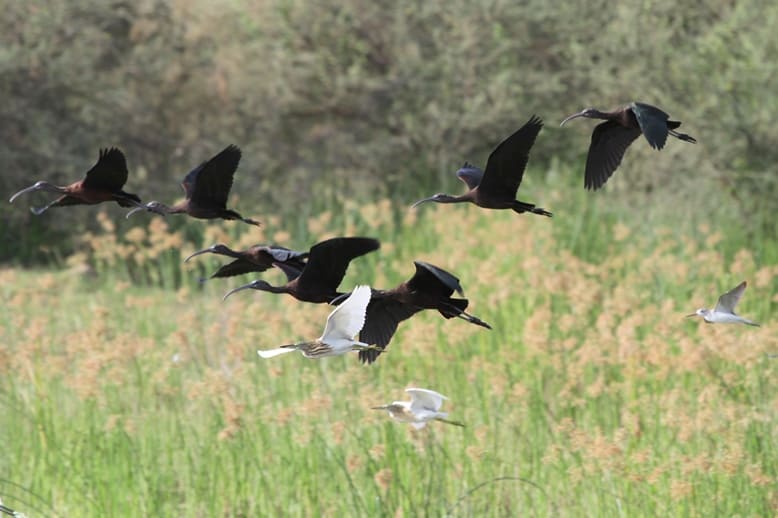During the trip to the Jizan area, much of the heron family activity was at Lake Maliki. This is the largest fresh water mass in the kingdom by a big margin.


The two commonest heron family members were glossy ibis and squacco heron. I looked carefully through the glossy bis for juvenile northern bald ibis. This is a known area for the wintering of the Syrian population which is in danger of extinction.
At one stage a cluster of glossy ibis with other birds included great egret, little egret, redshank, ruff, black winged stilt, northern shoveller and garganey (partially captured in the picture below).

Cattle egret were also present in numbers and were most often seen in the adjacent fields.

I think there were probably more purple heron than grey heron around. This is indicative of the southern latitude.

Arguably the best sighting in the heron family was a great bittern. This was my first sighting in Saudi Arabia despite. Surely not many great bittern are found this far south.

It evaded good pictures. Mansur got a rear view and I got a slightly blurred picture in flight.

Early in the first morning before we reached Lake Maliki, we birded a small wadi. Here a flock of spoonbill was seen overhead on the move towards the coast from the direction of Lake Maliki.

We finally caught up with Eurasian spoonbill again at two or three places along the coast south of Jizan.

Sadly goliath heron was not seen but it leaves something to look forward to on the next visit.
Robert Tovey
Dr Rob Tovey is a scientist by training and more recently an English teacher. His profession allows him to travel to some of the more difficult-to-get-to places and stay there for years if his inclination takes him. He is a keen bird watcher, blogger and amateur photographer. He has worked in Azerbaijan and Libya and is currently in Saudi Arabia. Rob also has a base in Bulgaria so overall is becoming a bit of birding specialist in very general terms where East meets West.


Leave a Reply